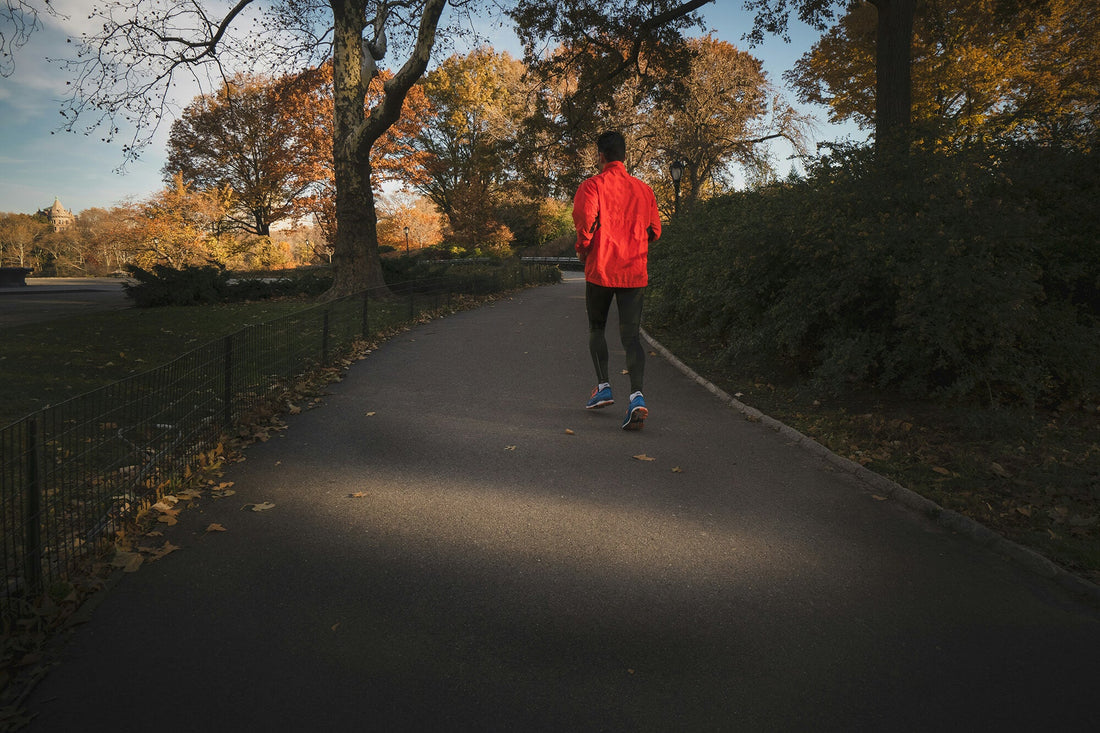We can’t discuss foot health without talking about bunions. They can be irritating and often painful, but there are a number of things you can do to both relieve bunion pain and prevent them from developing in the first place.
At The Feets, we’re all about preventative, active foot care (read more in our article: Why Active Foot Care?) so here, we’re tackling the bunion; its causes, pain relief tips, prevention strategies and more so you can get back on your feet and back to achieving your goals.
Welcome to Bunions 101. Let’s go.
What are bunions?
Most people don’t put a great deal of thought into their foot health before an injury or an annoying little niggle prevents them from walking or running comfortably, so it’s very common to find people with conditions like bunions who don’t actually know what they are and how they got there.
Bunions are known medically as Hallux Valgus, and they are a relatively common deformity of the joint below the big toe. They can become more pronounced and painful over time. A bunion looks like a bony bump at the base of the big toe that causes the toe to deviate in the direction of the other toes, sometimes at a sharp angle.

How common are bunions?
Studies show that bunions occur in around 23% of adults aged 18 to 65 years old, and in around 36% of adults older than 65 years old. According to a meta-analysis of 45 studies, the prevalence of bunions by gender was 23.74% for females and 11.43% for males, so it is possible women may be more likely to develop bunions.
What are the symptoms of bunions?
For most, bunions can cause symptoms like:
- Pain in the joint and surrounding area
- Swelling
- Redness
- Limited movement in the affected joint
- General discomfort when walking or running
Having bunions can make it difficult to find comfortable fitting shoes, and can eventually lead to further foot problems like corns, calluses, ingrown toenails and more.
What causes bunions?
Bunions can be caused by a number of things, and sometimes a combination of multiple genetic and environmental factors are at play causing the joint to become deformed. Here are some of the most common causes:
- Genetics: Yes, unfortunately bunions could simply be in your family, which makes it a little difficult to avoid them. Having a family history of bunions (i.e. your parents or grandparents have them) means your foot structure is usually predetermined, and you could develop bunions at some point in life. One study found 83% of participants with bunions had a positive family history of the condition. However, this doesn’t mean you will definitely get them, nor are you destined to have them interrupt your training – there are a number of exercises you can do to treat and prevent them, which I’ll cover later.
- Foot Mechanics: Whether genetics are a factor in your foot structure and mechanics or not, you may still have a slightly abnormal foot type. Structural variations can increase the likelihood of developing bunions later in life. This might be something like having flat feet or low arches, which can disrupt your balance when you walk and, over time, cause your big toe to deviate. Many people have abnormal foot mechanics, so it isn’t something to worry about, you just need to be aware of it and do appropriate exercises to keep your feet healthy.
- The Wrong Shoes: I could write a full article on the dangers of wearing the wrong shoes (and I will!) but in short, wearing shoes that are too tight, too narrow, or too high in the heel can cause your toes to move into an unnatural position and put excess pressure on the big toe joint. This can increase your risk of bunions.
- Repetitive Strain: If your job involves prolonged periods of standing or putting repetitive strain on your feet, this could also contribute to bunions over time.
- Other Foot Conditions: If you have an inflammatory condition affecting your feet, this could lead to developing bunions. A good example would be rheumatoid arthritis, which can affect the big toe joint over time.

Understanding the causes of bunions can help you take the necessary preventative measures to reduce your risk, avoid them affecting your training, and – if you are genetically predisposed to them – push your risk of bunions much further into the future.
The best 3 exercises for bunion pain relief
Let’s get one thing straight: Bunions are NOT a sign from the universe that you should stop running or training. Far from it. Bunions can’t be cured, but they can be treated to alleviate the pain and discomfort you feel, so they don’t continue to negatively affect your life.
Bunion pain relief can be achieved through a combination of exercises and stretches that work to strengthen the muscles surrounding your big toe joint, while improving foot flexibility. If bunions are causing you distress, here are the 3 best exercises for easing the pain:
- Toe Separation: This is an easy exercise to improve your toe alignment and flexibility, and there’s honestly no excuse to not do it because you can quite literally perform this one while sitting at your desk or watching TV. Sit with both feet flat on the floor, and insert toe separators between your big toe and the toe next to it. Something as simple as a cotton wool ball or rolled up piece of loo roll would work fine. Press your toes gently against the separators, and hold for several seconds before you release. Repeat this for a few minutes each day, and gradually you will widen the space between your toes which can reduce pressure on the bunion.

- Big Toe Stretches: Flexibility of your toes is important for bunions, so to relieve some of the tension on the big toe joint, try hooking your index finger over your big toe and gently pulling it upwards away from your other toes. Hold this for 15-30 seconds and release. By repeating this several times a day, you will start to improve your joint mobility and notice a difference in the discomfort caused by your bunions.
- The Towel Scrunch: Strengthening all of the muscles in your feet can help with bunion pain too. One way to do this is to place a towel on the ground and scrunch it towards you using just your toes. By doing this for a few minutes a day, you will strengthen the muscles in your feet and offer better support to your big toe joint.
Remember… if you suffer from a particular condition that may prevent you from performing these exercises, or that you think could be worsened by performing them, speak to your doctor or physical therapist before attempting them. While these exercises can be beneficial for those with bunions, there may be instances when they are not the most appropriate for your particular condition, and something else may be more effective.
4 ways to future-proof against bunions
Bunions cannot be cured, only treated for pain relief, so – as is the case with many foot conditions – prevention is more favourable than treatment after the fact. Taking some easy steps to prevent bunions developing in future could actually be more cost-effective long term, and could even be less invasive since surgery may be required to address extreme cases of bunion pain.
By taking preventative measures, you are preserving your overall foot health and comfort – this is what we’re all about here at The Feets.
Prevention > Treatment
So without further ado, here are 4 ways to prevent bunions forming in future:
- Wear the right shoes: One of the number one things you should be doing to prevent bunions forming is selecting the right footwear. Whether for running or for everyday use, choose shoes with a wide toe box, arch support and cushioning that will allow your toes the room they need to move around comfortably. Avoid high heels and tight or narrow shoes, as over time these will force your toes into an unnatural position which will put pressure on the big toe joint.

- Wear orthotic insoles: Insoles are designed to reshape the foot inside your shoes, and while you should still consider wider footwear, insoles can provide the right shape to alleviate any bunion pain or prevent it forming in future. Getting custom-made insoles prescribed by a podiatrist is the best way to ensure these work for your feet and your lifestyle. Insoles can offer additional support, correct imbalances, and alleviate pressure on the big toes.
- Foot exercises: As mentioned above, performing regular foot exercises to strengthen your foot muscles and improve flexibility can help keep bunions at bay. Things like toe stretches, foot rolls and calf raises all help to maintain proper foot mechanics, so incorporating exercises and stretches into your routine is a great way to maintain proper foot alignment and avoid developing bunions.
- Rest and elevate your feet: We are into preventing future foot pain and niggles, not simply treating the problem after it has developed. However, rest and elevation can be helpful as a preventative measure too, particularly if you spend a lot of time on your feet. Sit with your feet up on a chair with a cushion underneath, or whatever you need to rest it comfortably. This can reduce swelling and relieve stress on the big toe joint which can help you avoid bunions in the long term.
One final tip? Start young. A study found that 30.4% of study participants developed bunions due to wearing shoes with a narrow toe box between the ages of 20 and 29 years old, which shows the importance of starting to take care of your feet as early as possible.
Bunions are annoying, but they are especially irritating if you are an athlete looking to keep your feet as healthy as possible to continue achieving your physical goals. With a proactive approach to foot care that includes a few regular exercises, some tweaks to your footwear, and plenty of elevation and rest, you can ensure this painful foot condition never stops you from achieving big things.
Stay bunion-free, and go get it.
Logan
We’re The Feets. We know what it’s like to set the alarm for 5am, drag yourself out of a warm bed, lace up the shoes that are starting to show the miles, and head out in the grey morning to clock a few Ks before work. We’ve been there, we are there, and we’ve got your back. Follow us on Instagram or Tiktok for stories, motivation, tips and tricks, or just to be part of the growing community of those wanting to make something of themselves.







